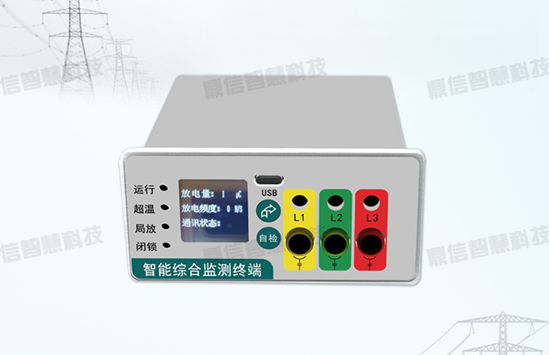In power systems, the health of cables is of critical importance, and partial discharge is a key indicator of cableinsulation status. Today, we will take an in-depth look at the relevant knowledge of cable partial discharge and the monitoring "goods" from Dingxin Smart Technology.
There are various types of partial discharge.
There are four main types of partial discharge in cables. Internal discharge mostly happens in gaps or cavities in solid or liquid dielectric materials; surface discharge happens at the junction of different insulating materials; corona discharge happens in gaseous dielectric materials with uneven fields, and is common in high-voltage equipment; tree discharge is a continuous impact of discharge in solid dielectric materials, which can form discharge channels and seriously damage cable insulation.
Rich partial discharge phenomena
Partial discharge can cause a variety of phenomena. Electrical pulse currents are common, similar to the "electrical signals" emitted during discharge; dielectric loss can lead to a decline in cable insulation performance; radiation (light) may cause a faint glow to be visible in the dark; sound (noise) may produce a "hissing" sound; increased gas pressure may cause an imbalance in internal cable pressure; and chemical reactions may accelerate the aging of insulation materials.
Monitoring "good things"
Dingxin Smart Technology's Cable Partial Discharge Short-Term Online Monitoring System DX-DLS100-JF primarily uses high-frequency pulse current sensors for cable partial monitoring, coupling local electrical pulse current signals from the cable body and joints, and transmitting them to the monitoring host.
Secondly, the system can collect and monitor the status of power cables in real time or periodically, and has a sensor detection and verification function. The signal acquisition unit can automatically collect and condition signals, and can also collect power frequency current phase. It supports multi-channel measurement and can perform continuous, real-time synchronous sampling without missing any abnormal signals.
The system can continuously and automatically monitor the basic characteristic parameters of partial discharge in real time, such as amplitude, phase, and frequency, and can automatically or manually adjust the background noise threshold. It has powerful data storage capabilities, capable of storing at least two years of relevant data, which can be exported via an external interface. Additionally, the system offers cable anomaly state monitoring point localization analysis functionality, displaying various discharge spectra and discharge trend charts in real time. Upon detecting anomalies, it immediately triggers an alarm, providing robust evidence for cable maintenance work and ensuring the stable operation of the power system.






